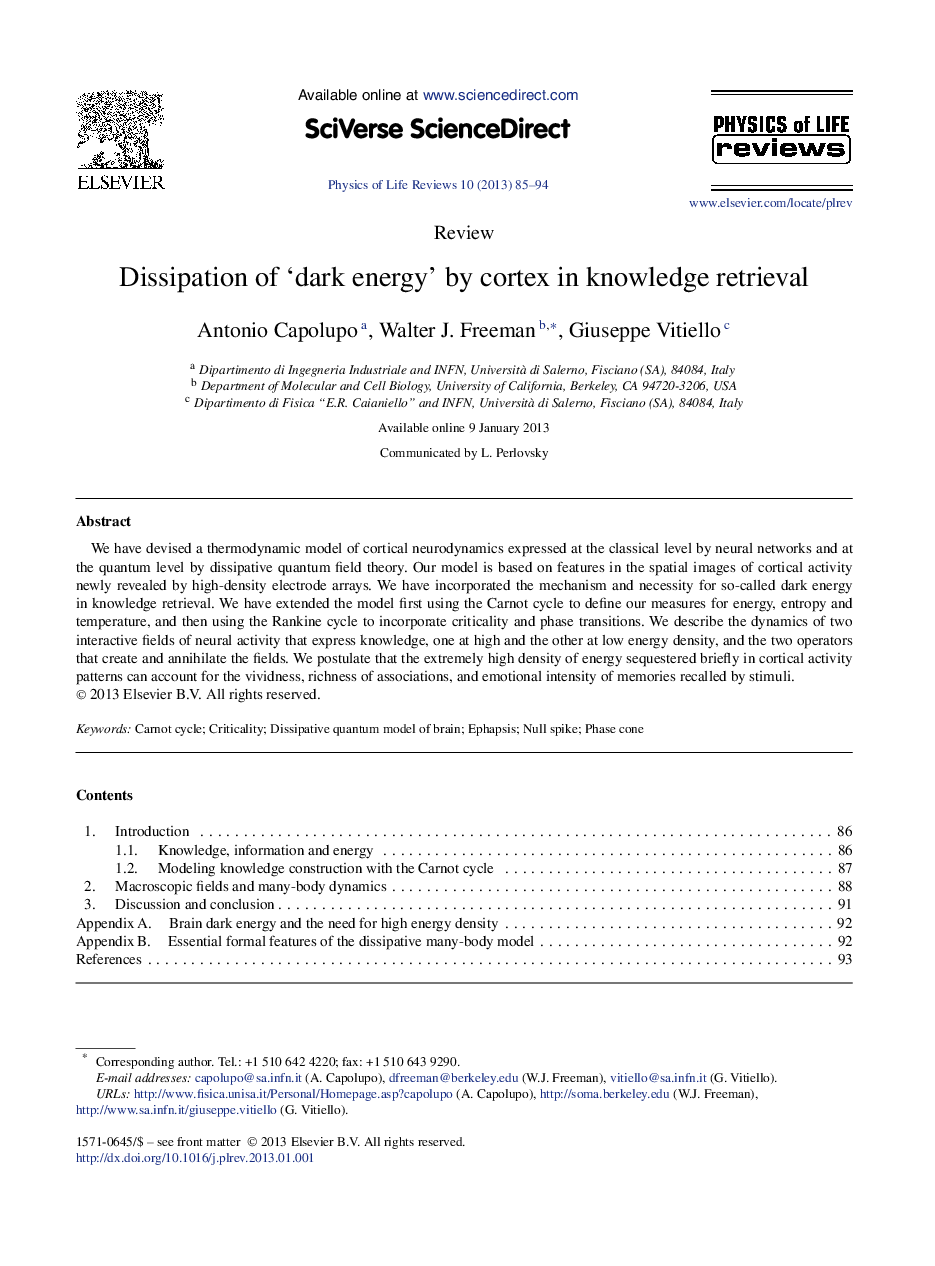| Article ID | Journal | Published Year | Pages | File Type |
|---|---|---|---|---|
| 1872981 | Physics of Life Reviews | 2013 | 10 Pages |
We have devised a thermodynamic model of cortical neurodynamics expressed at the classical level by neural networks and at the quantum level by dissipative quantum field theory. Our model is based on features in the spatial images of cortical activity newly revealed by high-density electrode arrays. We have incorporated the mechanism and necessity for so-called dark energy in knowledge retrieval. We have extended the model first using the Carnot cycle to define our measures for energy, entropy and temperature, and then using the Rankine cycle to incorporate criticality and phase transitions. We describe the dynamics of two interactive fields of neural activity that express knowledge, one at high and the other at low energy density, and the two operators that create and annihilate the fields. We postulate that the extremely high density of energy sequestered briefly in cortical activity patterns can account for the vividness, richness of associations, and emotional intensity of memories recalled by stimuli.
► We posit that cortex compresses its sensory information at high density in its memory as knowledge. ► Retrieval of knowledge fragments as vivid recollections requires neural activity at max density. ► EM anatomy of cortical neuropil explains extreme energy density in neural activity at rest and work. ► We modeled cortical thermodynamics with Carnot and Rankine cycles as retrieval by phase transition. ► Neural activity condenses from gas-like random firing to liquid-like coherent oscillations.
